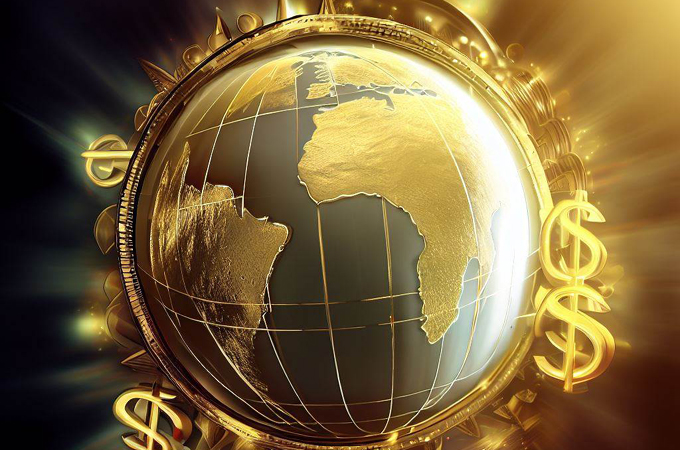Thu, Aug 17, 2023
Global wealth is likely rise by 38% over the next five years to reach $629 trillion by 2027, despite 2022 being the first year of wealth decline since 2008, says a key report.
Growth by middle-income markets will be the primary driver of global trends, says the 14th edition of the Global Wealth Report was launched today jointly by Credit Suisse and UBS.
The report estimates wealth per adult will reach $110,270 in 2027 and the number of millionaires to reach 86 million while the number of ultra-high-net-worth individuals (UHNWIs) is likely to rise to 372,000 individuals.
It shows that measured in current nominal USD, total net private wealth fell by $11.3 trillion ( – 2.4%) to $454.4 trillion at the end of 2022. Wealth per adult also declined by $3,198 (–3.6%) to reach $84,718 per adult.
Much of this decline comes from the appreciation of the US dollar against many other currencies. Financial assets contributed most to wealth declines in 2022 while non-financial assets (mostly real estate) stayed resilient, despite rapidly rising interest rates.
Saudi and UAE
The total household wealth amounted to $2.3 trillion in Saudi Arabia, compared to $1.2 trillion in the United Arab Emirates (UAE), according to estimates by the report.
However, owing to Saudi Arabia’s higher population, wealth per adult in the UAE at the end of 2022 ($152,556) was 68% higher than that in Saudi Arabia ($90,975). The proportional difference has fallen over time. Earlier this century, wealth per adult in the UAE was more than double that of Saudi Arabia.
Net worth per adult in Saudi Arabia rose 8.4% in USD terms in 2021 using current exchange rates and continued to rise in 2022 by 6.6%. In the UAE, growth rates of wealth per adult were again similar in 2021 using current exchange rates at 18.7%.
The share of the top 1% in the wealth was 37.6% in Saudi Arabia and 44.6% in the UAE. These values place both countries toward the top of the international inequality ranking.
Regional and demographic themes
Regionally, the report shows the loss of global wealth was heavily concentrated in wealthier regions such as North America and Europe, which together shed $10.9 trillion.
• Asia Pacific recorded losses of $2.1 trillion.
• Heading the list of losses in market terms in 2022 is the United States, followed by Japan, China, Canada and Australia.
• The largest wealth increases at the other end were recorded for Russia, Mexico, India and Brazil.
• In terms of wealth per adult, Switzerland continues to top the list followed by the USA, Hong Kong SAR, Australia and Denmark despite sizeable reductions in mean wealth versus 2021.
Generation X
When looked at in demographic terms, Generation X and Millennials continued to do relatively well in 2022 in the US and Canada but were not immune to the overall wealth reduction.
Reduction in wealth inequalities
Along with the decline in aggregate wealth, overall wealth inequality also fell in 2022, with the wealth share of the global top 1% falling to 44.5%. The number of USD millionaires worldwide fell by 3.5 million during 2022 to 59.4 million. This figure does not, however, take into account 4.4 million “inflation millionaires” who would no longer qualify if the millionaire threshold were adjusted for inflation in 2022.
Global median wealth, arguably a more meaningful indicator of how the typical person is faring, did in fact increase by 3% in 2022 in contrast to the 3.6% fall in wealth per adult. For the world as a whole, median wealth has increased five-fold this century at roughly double the pace of wealth per adult, largely due to the rapid wealth growth in China, the report said.
A brighter outlook
Iqbal Khan, President Global Wealth Management at UBS, said: “As the world’s largest truly global wealth manager, we are uniquely positioned to draw on knowledge and insights from across our wealth management business. This year’s Global Wealth Report reveals valuable insights about the state of our economy and society, as well as the shifting meaning and potential of prosperity. This sweeping analysis of household wealth covers the estimated wealth holdings of 5.4 billion adults around the world and across the wealth spectrum. It looks to future trends, helping us to frame expectations, understand the ever-changing nature of wealth creation, and better conceive of the power of wealth to broadly benefit our society.”
Anthony Shorrocks, economist and report author, said: “Much of the decline in wealth in 2022 was driven by high inflation and the appreciation of the US dollar against many other currencies. If exchange rates were held constant at 2021 rates, then total wealth would have increased by 3.4% and wealth per adult by 2.2% during 2022. This is still the slowest increase of wealth at constant exchange rates since 2008. Keeping exchange rates constant but counting the effects of inflation results in a real wealth loss of –2.6% in 2022. Similarly, financial assets contributed most to wealth declines while non-financial assets (mostly real estate) stayed resilient, despite rapidly rising interest rates. But the relative contributions of financial and non-financial assets may reverse in 2023 if house prices decline in response to higher interest rates.”
Nannette Hechler-Fayd’herbe, Chief Investment Officer for the EMEA region and Global Head of Economics & Research at Credit Suisse, said: “Wealth evolution proved resilient during the Covid-19 era and grew at a record pace during 2021. But inflation, rising interest rates and currency depreciation caused a reversal in 2022.”


















